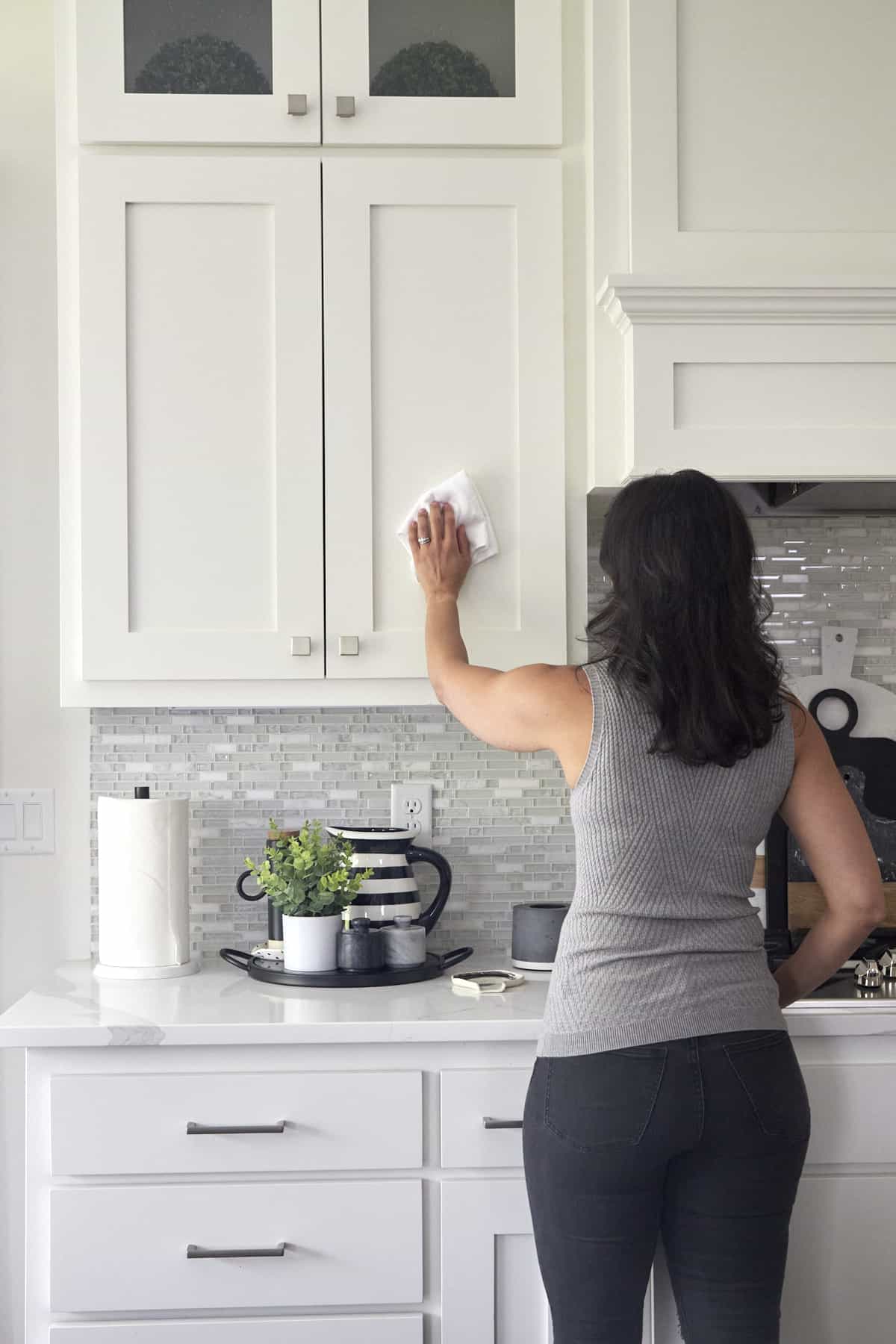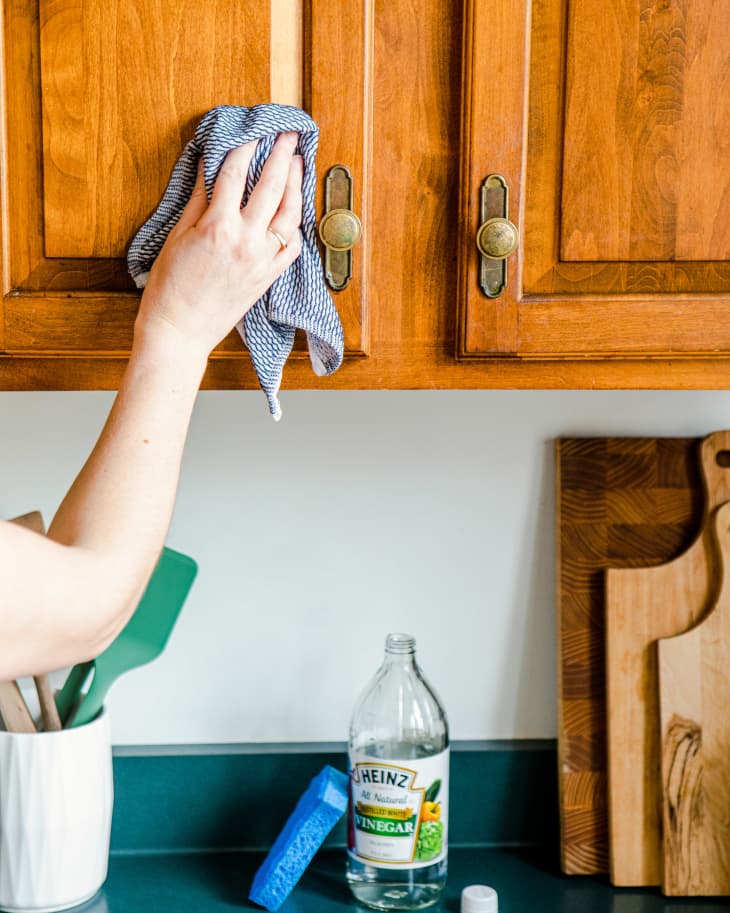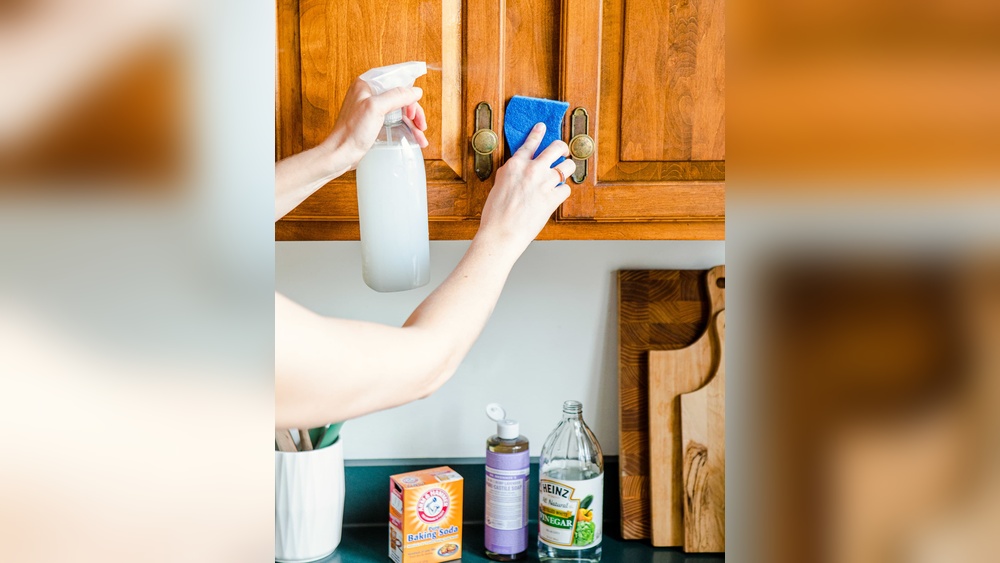Your kitchen cabinets face daily battles with grease, dirt, and stains that dull their shine and beauty. If you’ve been wondering how to clean kitchen cabinets effectively without damaging them, you’re in the right place.
This guide will show you simple, practical steps to refresh your cabinets using easy-to-find products and smart techniques. Whether your cabinets are wood, painted, or laminated, you’ll learn how to tackle tough grease, stubborn marks, and hidden grime in grooves—making your kitchen look spotless and inviting again.
Keep reading to discover the secrets that will save your cabinets and bring back their original glow!
Choosing The Right Cleaner
Soap solutions made with a few drops of mild dish soap and warm water work well for painted cabinets. Use a soft cloth to wipe gently. Avoid harsh scrubbing to protect the paint.
For wood cabinets, Murphy’s Oil Soap is a good choice. It cleans dirt and keeps wood looking fresh. Dilute the soap as directed and apply with a soft cloth.
Specialized degreasers help remove tough grease and grime. Choose one safe for your cabinet type. Test on a small area first to avoid damage. These degreasers break down sticky residues quickly.
Preparing Cabinets For Cleaning
Start by removing all loose dust and dirt from cabinet surfaces. Use a soft microfiber cloth or a feather duster to gently wipe each cabinet. Avoid rough cloths or brushes that can scratch the finish.
For corners and edges, a soft-bristled brush helps reach tight spots without damage. Avoid using steel wool or abrasive pads. These tools can leave visible marks on cabinets.
Keep cleaning tools clean and dry. Dirty cloths may spread dust and cause scratches. A clean cloth also picks up more dust and dirt effectively.
| Tool | Use | Why to Avoid |
|---|---|---|
| Microfiber Cloth | Dust removal and wiping | Safe, gentle on surfaces |
| Feather Duster | Light dusting | Does not scratch |
| Soft Brush | Cleaning corners | Reaches tight spots |
| Steel Wool/Abrasive Pads | Not recommended | Scratches and damages finish |
Step-by-step Cleaning Process
Start by mixing a gentle cleaning solution. Use warm water with a few drops of dish soap for painted or laminated cabinets. For wood, dilute Murphy’s Oil Soap with water. Dip a soft cloth in the solution and wring it out well. Gently wipe the cabinet surfaces to remove dirt and grease. Avoid soaking the wood to protect it.
Next, take a clean damp cloth to rinse off any residue left by the cleaning solution. This step stops streaks and keeps cabinets shiny. Make sure to wipe all areas you cleaned.
Finally, dry the cabinets with a soft, dry cloth. Buff them gently to remove moisture and add shine. This helps protect the finish and keeps cabinets looking fresh.

Tackling Tough Spots
Grease buildup can make cabinets look dirty and sticky. Use a mix of warm water and mild dish soap. Dip a soft cloth and gently wipe the greasy spots. For better results, scrub gently in circles to lift the grease without damaging the surface.
Scuff marks often appear from shoes or furniture. A magic eraser or a soft cloth with a little baking soda can help remove these marks. Rub gently until the marks fade away.
Grooves and crevices trap dirt and dust. Use a soft toothbrush or a small brush dipped in soapy water to clean these tight spots. Wipe with a damp cloth afterward to remove residue.
Stubborn stains need special care. Try a paste made from baking soda and water. Apply the paste, let it sit for a few minutes, then scrub softly and wipe clean. Avoid harsh chemicals that can harm cabinet finishes.
Common Mistakes To Avoid
Skipping dusting can make dirt stick and hard to clean later. Dust first to avoid buildup and scratches.
Using abrasive materials like rough sponges or scrubbers can damage cabinet surfaces. Soft cloths or sponges work best.
Too much water can cause excess water exposure. This may swell or warp wood cabinets. Use damp, not soaking wet, cloths.
Misuse of magic erasers can strip paint or finish. Test on a small spot first to prevent damage.
:max_bytes(150000):strip_icc()/steps-to-clean-kitchen-cabinets-1900630-final-5bbcde064cedfd0026eeec24.png)
Maintaining Cabinet Shine
To keep cabinets shining, develop regular cleaning habits. Wipe surfaces weekly with a soft cloth dampened with warm, soapy water. Avoid harsh chemicals that can damage the finish.
For quick touch-ups, use a dry microfiber cloth to remove dust and fingerprints daily. Spot clean spills immediately to prevent stains. A gentle polish or wood conditioner can restore shine every few months.
| Quick Touch-Up Tips |
|---|
| Use a dry microfiber cloth to dust daily |
| Spot clean spills as soon as they happen |
| Apply polish or conditioner every 3-4 months |
| Avoid abrasive pads or strong chemicals |

Frequently Asked Questions
What Is The Best Thing To Clean Kitchen Cabinets With?
Use a few drops of Dawn dish soap in warm water for painted or laminated cabinets. For wood, use diluted Murphy’s Oil Soap. Wipe with a microfiber cloth, rinse, then dry to prevent streaks and damage.
Can I Use Dawn Dish Soap To Clean My Cabinets?
Yes, Dawn dish soap works well for cleaning painted or laminated cabinets. Mix a few drops with warm water, wipe, rinse, and dry. Avoid using it on natural wood cabinets; use Murphy’s Oil soap instead for wood surfaces.
What Should You Not Use To Clean Cabinets?
Avoid using harsh chemicals, abrasive cleaners, bleach, ammonia, or rough scrubbers on cabinets. They damage finishes and wood surfaces.
Is Murphy Oil Soap Good For Kitchen Cabinets?
Murphy’s Oil Soap cleans wood kitchen cabinets effectively without harsh chemicals. It removes dirt and grime while nourishing wood surfaces safely. Use diluted Murphy’s Oil Soap with warm water and a microfiber cloth for best results. Avoid over-wetting to prevent damage.
Conclusion
Cleaning kitchen cabinets keeps your kitchen fresh and inviting. Start with dusting to remove loose dirt and dust. Use the right cleaning solution based on your cabinet material. Wipe gently with a microfiber cloth to avoid scratches. Rinse well to remove soap residue and prevent damage.
Always dry and buff cabinets to keep them shiny and streak-free. Regular cleaning helps maintain your cabinets’ beauty and extends their life. Simple steps can make a big difference in your kitchen’s appearance. Stay consistent, and enjoy a cleaner, brighter kitchen every day.

